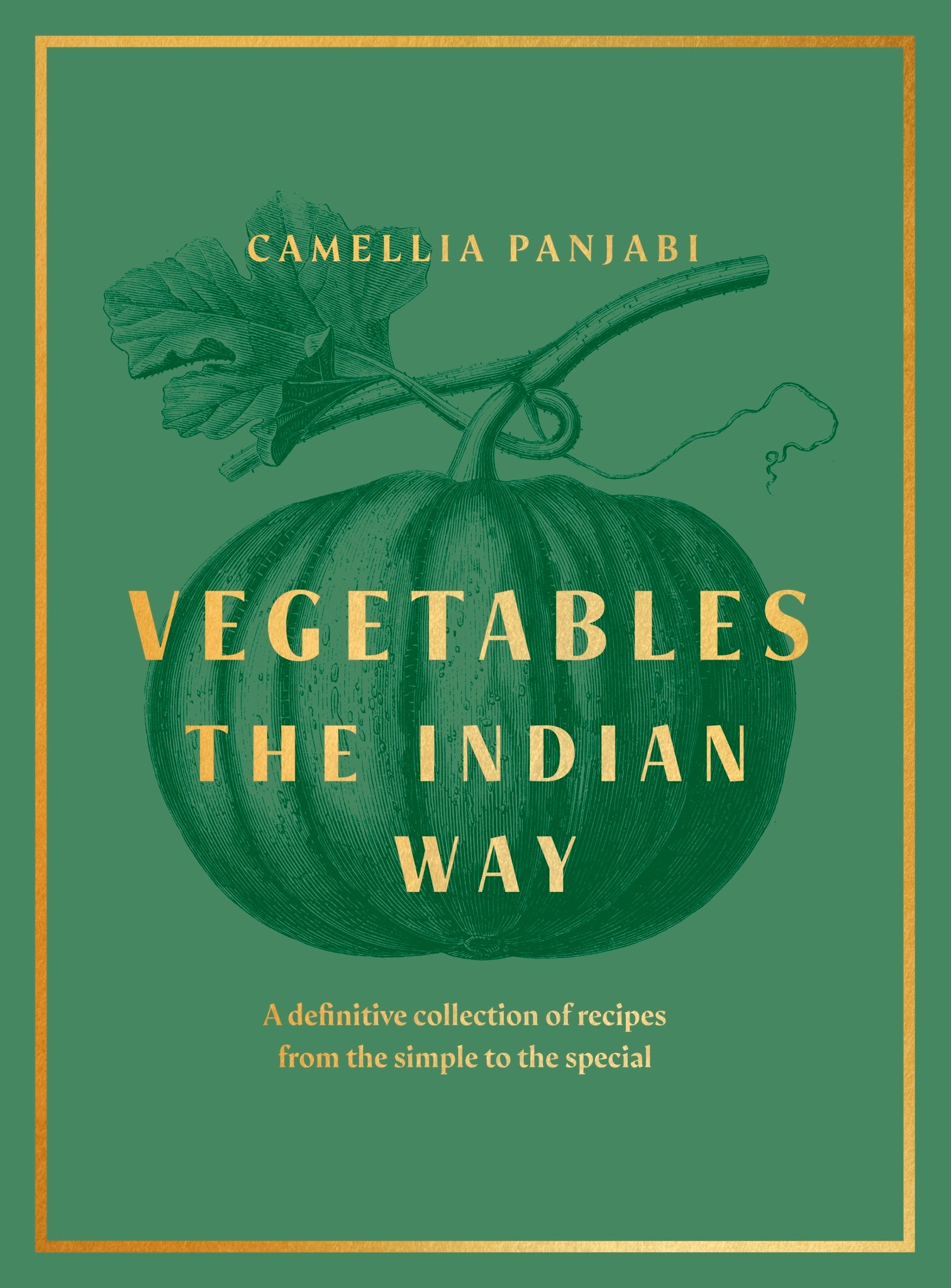
Bestselling author and renowned restaurateur Camellia Panjabi MBE, celebrated for transforming the UK’s perception of Indian cuisine through her stylish London restaurants and iconic cookbook, 50 Great Curries of India, is now setting her sights on a new culinary mission: inspiring Brits to fall in love with vegetables.
Drawing on decades of experience as a hotelier managing restaurants across various cuisines, Panjabi observed that vegetables were too often relegated to the sidelines.
“One of the facets of my job was to help set up restaurants for the different hotels, and they covered all kinds of cuisines,” says Panjabi, who has shaped London’s food scene, collaborating with her family to create celebrated restaurants like Veeraswamy, Amaya, Chutney Mary and the beloved Masala Zone chain.
“When I left that job, I then began to reflect on the past and thought, how come in every menu that we ever designed, vegetables were always in the section called sides? They were never part of the starters, they were never part of the main course.”
Determined to change this narrative, Panjabi has made vegetables the true “hero” of every plate with her brand-new cookbook, Vegetables: The Indian Way.
“The majority of food on anyone’s plate is normally two or three kinds of vegetables, and we had failed to take that into account when we served the public,” reflects the restaurateur, who is often referred to as “the Queen of Indian cuisine”. “I thought, I’m going to do a 90-degree turn and say the hero of these dishes is going to be the vegetables.”
Pulling together her own experiences in the food industry and her upbringing in Mumbai, alongside extensive research into traditional Indian cooking, Panjabi asked herself: how do you make a cauliflower a hero vegetable dish? How do you make potatoes a hero dish, rather than a little bit on the side?
“I discovered this whole world of stuff which can be made very sophisticated as well, because vegetarian hostesses have been having dinner parties celebrating their cuisine in the most attractive ways,” says Panjabi. “I found that it was possible to make the most beautiful compositions and the most beautiful colour combinations.”
While this legacy cookbook contains a plethora of fantastic vegetarian recipes, Panjabi wants to emphasise that this book is for everyone.
“This book is not addressed to just vegetarians – it’s addressed to the whole universe, because everybody is a vegetable eater,” highlights Panjabi. “Some eat less as they don’t know how to handle it best, and many people have a repertoire of six to seven vegetables, and maybe two ways to make each vegetable, and over time, that can get quite boring.

“I hope each person will re-examine their beliefs before they read the book and after, and how it changes their perspective. Because I think what will happen is that people won’t think of vegetarian food as something to be consumed by a small bunch of people, but as the mainstay of everybody’s way of eating.”
Here are her top tips for making vegetables the star of every dish.
Try a new root vegetable and a ‘sun’ vegetable combination
While researching for the book, the restaurateur noticed a common theme in many traditional Indian vegetarian dishes – they regularly paired a root vegetable (such as cauliflower or carrots) with a “sun-grown” vegetable (like tomatoes or beans).
“One easy way to identify a good vegetarian meal is to choose a dish that contains vegetables which grow underground and those which grow in the sun,” says Panjabi. “Often in the West, especially in winter, you would have a meal with carrots and potatoes, for example, but both are underground vegetables. So, I noticed that this consciousness was not there.
“I don’t think among Indians it was conscious, more of a habit which they have inherited from previous generations, but there seems to be logic to this.”
Learn the health benefits of every vegetable
The 120 authentic recipes in Panjabi’s new cookbook are all organised by vegetable and are accompanied by notes on their nutritional values and unique wellness benefits.
“It’s very important to understand the health benefits of each and every vegetable and what it does for you,” says Panjabi. “In this book, we have tried to extend the confidence and knowledge of different vegetables to understand what role they play in health, and how they affect our gut, metabolism and absorption, and also bring in the ancient Ayurvedic belief systems about each of the vegetables.”
Make your plate colourful
“The colours are very important – it’s almost like fashion. It’s like putting together an ensemble,” says Panjabi. “You have to decide what the handbag, shoes, top and coat are going to be. So, when you assemble a meal, you say, okay, I have orange carrots, now I need something green. And what about purple cabbage? You can assemble it all in a great mix stir-fry, or individually in a little bowl and have a kind of symphony.”
Don’t be afraid to be eclectic and mix cuisines
If Panjabi had to sum up her cooking style in one word it would be “eclectic” –and she encourages others to be bolder with their flavour combinations.
“I don’t worry about which ingredient comes from which cuisine. If I want to add Thai lemon leaf to a stir fry, which would normally be Western, then I do that,” says Panjabi. “Similarly, I don’t restrict za’atar to just Middle Eastern food; I would use it wherever I thought it would blend. It’s like writing music. You put different notes together, and you don’t know what the end sound will be, and it comes with trial and error.”
Buy and eat vegetables that are in season

Eating food in season is often cheaper, has a better taste and a higher nutritional value.
“We have got so used to eating so many foods out of season, and this has been made possible by the fact that things are now grown in plastic poly tunnels and atmosphere and everything is controlled,” says Panjabi. “It means a tomato looks like a tomato, tastes something like a real tomato, but is living on water filled with chemicals. It’s not the real thing.
“I think the consciousness of how to buy vegetables which might have been grown in soil, which might have seen the sun and are in season is a very good way to start.”
Don’t throw away the greenery, use the whole vegetable
“Almost all vegetables have plant material attached – like a cauliflower wrapped in wonderful dark green leaves – and we tend to throw that away,” acknowledges Panjabi. “I think the consciousness of how to eat carrot greens, turnip greens, cauliflower greens, and take the whole vegetable in its whole form has been lost. Of course, supermarkets don’t give us that possibility, but farmers' markets and small vegetable vendors do.”
‘Vegetables: The Indian Way’ by Camellia Panjabi (Penguin Michael Joseph, £40).







